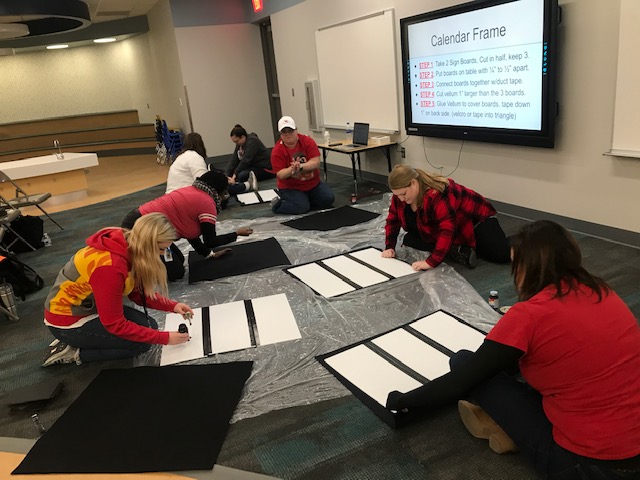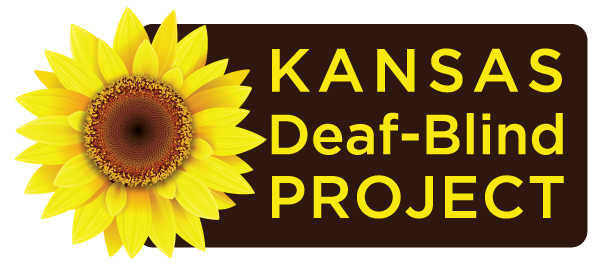For Educators
The first step in being eligible to receive services is registering a child, ages birth to 21, with the KSDB Project. A parent or a school team member may register a child by completing the online application. A pdf version is also available on our Resources page.
Initial applications must be submitted to the KSBD Project by December 1st of the current year to qualify for the current year’s census. If your student is registered (certified), we will notify you to complete the census by January of the following year. A list of students who completed the census is submitted to KSDE on June 30th for consideration to the Kansas Deaf-Blind Fund.
Deaf-Blind certifications are completed every three years (unless provisionally certified for a year). The deaf-blind census is conducted every year. The KSDB Project sends a reminder letter to the school contact 30 days before the due date.
Complete the KSSB Service Request Form. KSSB intake will route your request to the DB Project, or you may complete the Request for Technical Assistance Form.
The type of technical assistance you receive is based on your level of need and the involvement you prefer, from a more fundamental level such as information or request for resources to a more intense level of support such as child-specific TA.
Federal Definition – Deaf-blindness is “concomitant hearing and visual impairments, the combination of which causes such severe communication and other developmental and educational needs that they cannot be accommodated in special education programs solely for children with deafness or children with blindness.” 34 CFR 300.8 (c) (2)
KSDE Factsheet – Deaf-blindness is defined as children who have a degree of vision loss (blind) and a degree of hearing loss (deaf) that is determined by the age of onset and varies to the extent, progression, and degree of loss. “Deaf-blindness” means the combination of hearing and visual impairments that causes such severe communication and other developmental and educational needs that they cannot be accommodated in special education programs solely for the hearing impaired or the visually impaired (K.A.R. 91- 40-1(o).
Eligibility Criteria Chart – Combination of Hearing and Vision Loss
| Type and Degree of Vision Loss | Type and Degree of Hearing Loss | Not On The Chart But May Be Considered Deaf-Blind |
| Low Vision | Mild | Some children and youth may be at risk for compromised access to learning and potential hearing and vision loss due to congenital infections, hereditary syndromes, perinatal and postnatal complications.
Younger children at risk may qualify for deaf-blind certification to receive specialized services. They may no longer be eligible for deaf-blind certification and services as they age and test out.
|
| Legally Blind | Moderate – Moderately Severe | |
| Field restriction of less than 20 degrees | Severe | |
| Light Perception | Profound | |
| Totally Blind, No Light Perception | Auditory Neuropathy | |
| Cerebral/Cortical Visual Impairment | Central Auditory Processing Disorder | |
| Diagnosed Progressive Loss | Diagnosed Progressive Loss | |
| Documented Functional Vision Loss | Documented Functional Hearing Loss | |
| Ocular motor deficit (e.g., muscle imbalance, nystagmus, Duane’s syndrome, oculomotor apraxia, muscle paresis) | Conductive permanent hearing loss due to chronic middle ear dysfunction | |
| Anophthalmus (absence of actual eyeball in one eye). | Congenital malformation of the ear (Microtia or Atresia) resulting in hearing loss | |
| Other visual impairments or condition | Other hearing diagnoses or condition | |
| Further testing required** | Further testing required** |
** May be considered for a provisional certification so that assessment is facilitated
The U.S. Department of Education mandates all state deaf-blind Projects to conduct an annual census of children ages birth through 21 who are deaf-blind. Information from all states is compiled and reported to the National Center on Deaf-blindness (NCDB). The census information is confidential, and no personal identifying information is provided to NCDB.
The information is used in funding, planning, and developing appropriate services for children and youth who are deaf-blind. To see the previous reports, go to https://www.nationaldb.org/info-center/national-child-count/.
Completion of the census makes the student eligible to apply for the Kansas Deaf-Blind Fund administered by the Kansas Department of Education.
Kansas is the only state with a special fund appropriated by the legislature to support students (birth through 21) who are deaf-blind in their educational programs. The Kansas Department of Education administers this fund and provides up to $4,500 per student until the fund is depleted. The funds are used to offset costs associated with educating students who are deaf-blind and who have current certification on the Kansas Deaf-Blind Census. Funds can be used in the following areas:
- Assistive technology (including adaptive equipment)
- Consultation
- Evaluation as described in the Deaf-Blind Fund application
If you need information about applying for the Kansas Deaf-Blind Fund, contact:
DBFund@ksde.org
(785) 291-3098
You may also access information from the KSDE Website here.
The Deaf-Blind Core Team is an essential element for every school district or Tiny-k network. The purpose of establishing a DB Core Team is to build and strengthen local capacity through our partnership. The team comprises two or more service providers to include a program coordinator or a special education administrator. Each district decides on who will be in the core group.
The DB Core Team provides leadership in identifying and registering students with deaf-blindness to the KSDB Project. The team serves as a liaison to the KSDB Project and guides in helping the district serves students with deaf-blindness in collaboration with the KSDB Project. The DB Core Team will allow for a more integrated approach to delivering deaf-blind services in your district or Tiny-k Programs.
The KSDB Project offers the following to the DB Core Team:
- Scholarship for certified paraprofessionals/ interveners (contingent on funding from KSDE).
- Mini-grant for materials or resources to support our collaborative work. The mini-grant is separate from the Kansas Deaf-Blind Fund. Mini-grant application for the Deaf-Blind Core team.
- Limited scholarship for professional development training or conferences.
- A Deaf-Blind Consultant is available for support. Request for Consult or Technical Assistance
- Customized team collaboration site for the student – a repository of strategies, videos, and communication about the student who is deaf-blind.
If interested to develop a DB Core Team in your district or program, please email: kansasdeafblind@kssdb.org.
The Deaf-Blind Project offers a Team Collaboration Site for each local school team as a repository of action plans, articles, resources, and discussion among the “educational team” and the KSDB Projects.
THE TEAM COLLABORATION SITE IS UNDER CONSTRUCTION.
Transition planning helps students with deaf-blindness prepare for life after high school. Kansas requires transition services to be included in the student‘s IEP beginning at the age of 14. It is helpful to have a Person-Centered Planning completed to support the process.
Because learners with deaf-blindness often have complex needs, it is recommended to start the transition plans earlier. It is a collaborative process between the student, family, educational team, and adult services such as vocational rehabilitation and other relevant agencies. It is essential to include a transition planning team member who has a strong understanding of deaf-blindness.
Beyond formal transition planning, preparation for adult life really begins much earlier in a child’s life with activities that promote self-determination, establish community connections, and build skills that are needed for future employment and lifelong learning. (https://www.nationaldb.org/info-center/educational-services/transition-planning/)
The Kansas Deaf-Blind Project offers the following resources to support the student, family, and educational team at no cost.
- Conduct Person-Centered Planning utilizing Charting the LifeCourse Framework or MAPS (Making Action Plans) to develop a vision for a good life for the student; identify or develop supports, and explore what it takes for the student or family to live the good life they envision for the student. The KSDB Project provides Person-Centered Planning in any stage of the student’s life: early childhood, school-age, and transition to adulthood. Request for Person-Centered Planning here.
- Connect the family and school team to our partner agencies for additional services or information: Helen Keller National Center, Kansas State School for the Blind, Kansas School for the Deaf, Families Together.
- Recorded webinars and training on pertinent topics.
- Provide related information requested by the family or educational team.

